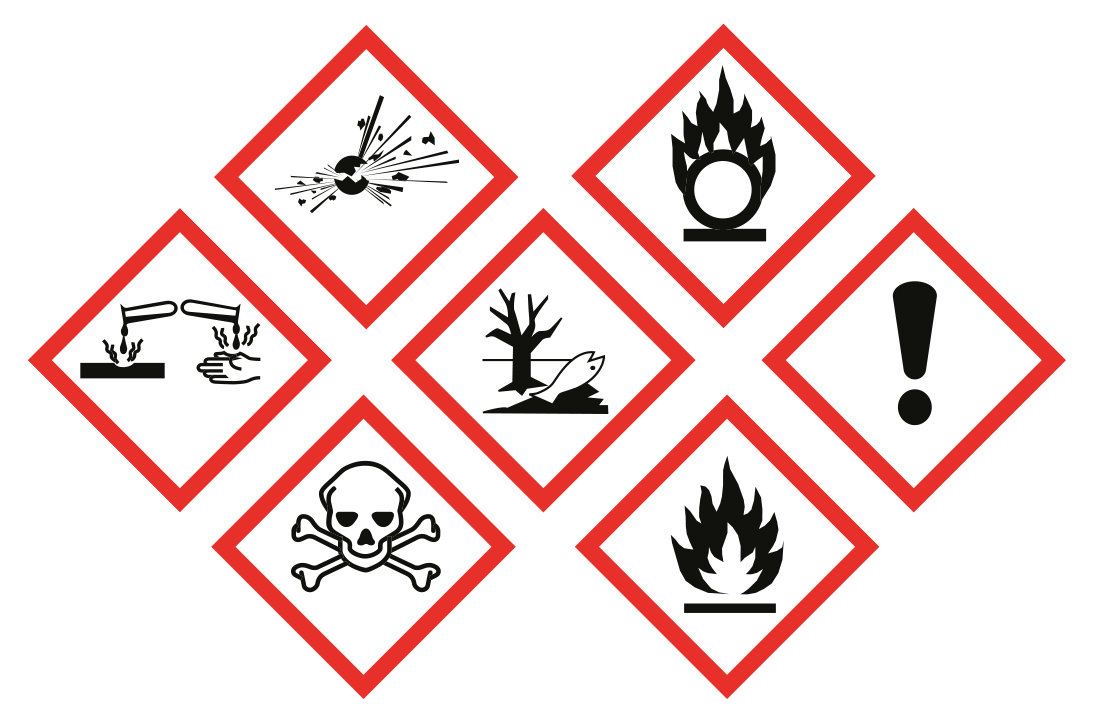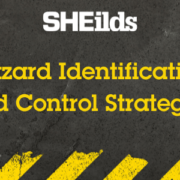CLP Hazard Signs
CLP Hazard Signs – Do you know them all?
Learn about CLP hazards from our IOSH Managing Safely training course.
On 1st June 2017 all of the CHIP pictograms must be updated to CLP for all products. These pictograms are vital to help us understand what is present in a container, many of which hold hazardous chemicals. Not understanding these warning signs may put yourself and others in danger through improper use.
What is the CLP?
CLP stands for Classification, Labelling and Packaging of Substances and Mixtures Regulation and came into force on 20th January 2009 in the UK and all EU Member states. It has been adopted from the GHS (Globally Harmonised System) from the United Nations. The GHS however is a voluntary agreement and not a law, the CLP is a legal mechanism to ensure that it becomes legally binding.
How does this affect me?
All producers of hazardous chemicals were required to comply with CLP Regulation by June 1st 2015 and a two year transitional period was given for mixtures that had already been labelled packaged and classified under the DPD (Dangerous Preparations Directive) regulation. These are the bright orange and black hazard symbols you may already be familiar with.
The black cross on a yellow triangle warning sign was removed by regulation 3(4) of the CLP (Amendment) Regulations, if this is being used in your business the most relevant warning sign should be picked from the new pictograms available. These signs and labels must be clearly visible and must be durable. If these are damaged, there are a handful of solutions:
- If you have received the product from a supplier, then they should be contacted and a replacement can be sent out. The supplier should also check their stock to ensure other products are not damaged.
- If possible, you can replace the labels yourself with stickers that are available to purchase. If you are unsure of the correct pictograms to display you can check the requirements for each substance here:
Search for substances in the C&L Inventory database:
https://echa.europa.eu/regulations/clp/cl-inventory
From CHIP to CLP
The CLP system was introduced as a way to provide a more striking label on dangerous goods in the workplace. A great rule of Health and Safety is to never assume that everyone knows what you do. Many people will ace the above quiz and score full marks however there are people which will not understand a handful of these. If you work with dangerous chemicals you should ensure that they are correctly labelled and clear and perhaps make accessible a guide to each of the pictograms. If a container has a damaged label, do not hesitate to contact the supplier and ask for a replacement. On the unfortunate occasion that an accident occurs, a lawsuit could arise from improperly or unclearly labelled goods.
What does each pictogram mean?
 Explosive – Symbolised by an exploding bomb.
Explosive – Symbolised by an exploding bomb.
 Hazardous to the environment – Symbolised by a dead tree and fish.
Hazardous to the environment – Symbolised by a dead tree and fish.
 Compressed Gas – Symbolised by a gas cylinder.
Compressed Gas – Symbolised by a gas cylinder.
 Serious Health Hazard – Symbolised by a humanoid outline showing internal corrosion.
Serious Health Hazard – Symbolised by a humanoid outline showing internal corrosion.
 Hazardous to the Ozone Layer – Symbolised by an exclamation mark.
Hazardous to the Ozone Layer – Symbolised by an exclamation mark.
 Acute Toxicity – Symbolised by a skull and crossbones.
Acute Toxicity – Symbolised by a skull and crossbones.
 Corrosive – Symbolised by test tubes corroding a black bar and a hand.
Corrosive – Symbolised by test tubes corroding a black bar and a hand.
 Oxidising – Symbolised by a flaming circle.
Oxidising – Symbolised by a flaming circle.
 Flammable – Symbolised by a flame.
Flammable – Symbolised by a flame.
Now that you know the changes and understand the new pictograms you should ensure all of your friends and colleagues are in the same boat. Some of these are visible on everyday household products and simply knowing these could save a life.
Share and let us know what you scored in the comments below.
Stephen Conlan



Leave a Reply
Want to join the discussion?Feel free to contribute!